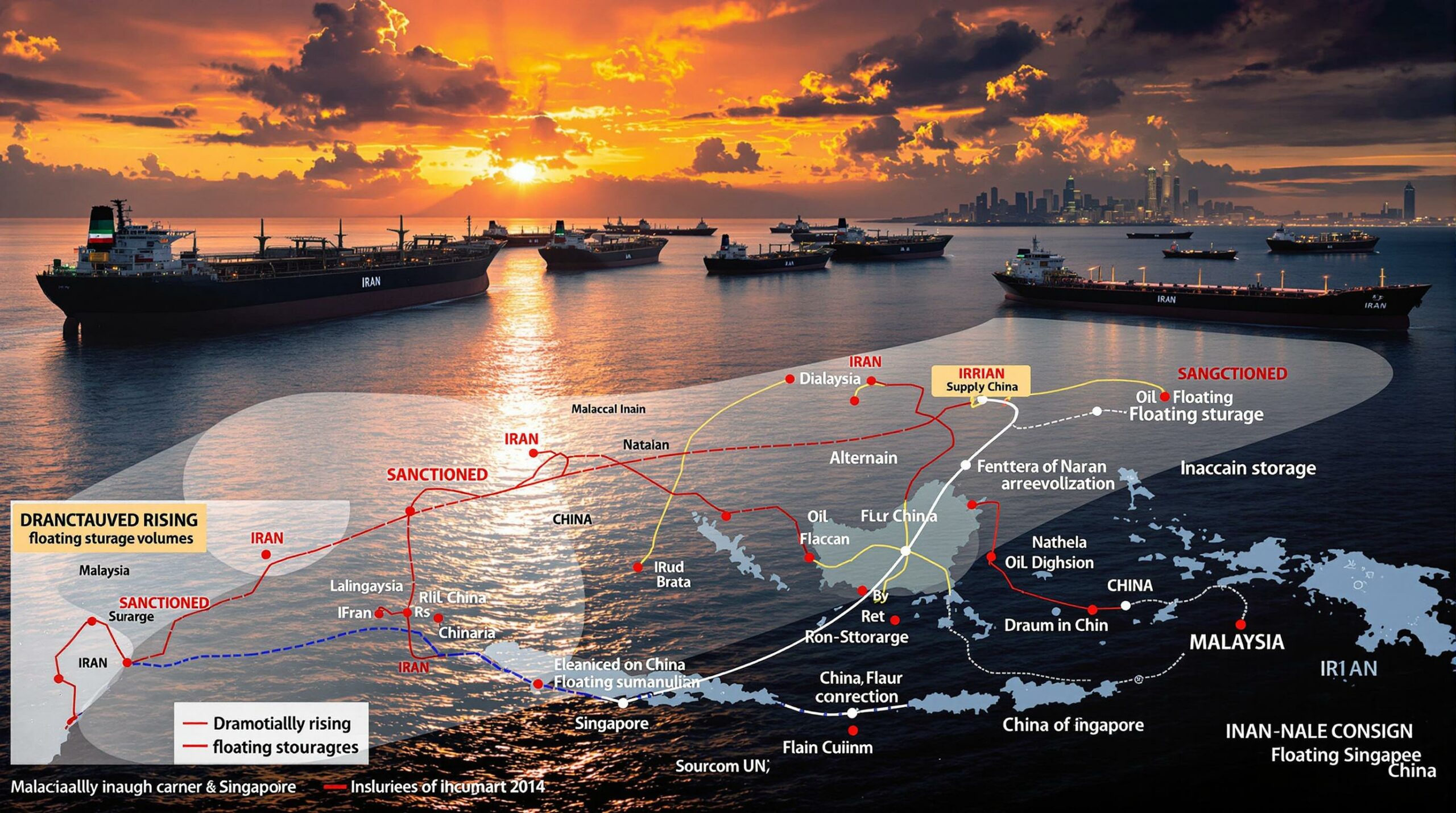Global Gold Mining Expansion: New Projects Driving Production Growth in 2025
The gold mining sector is witnessing significant expansion in 2025, with several major projects entering production during the first half of the year. These developments represent critical new gold flows from new mines into the global market, with both greenfield and brownfield projects contributing to production growth. Four notable operations have commenced gold production, adding approximately 724,000 ounces of annual gold capacity to the global supply chain at peak production.
These new gold mines span across three countries – Canada, Burkina Faso, and Australia – representing a diverse geographic distribution of new production centers. The timing of these developments is particularly significant given the strong gold market performance that has encouraged capital deployment into both new projects and revitalization of previously operating sites.
What Are the Latest Gold Mine Developments Entering Production?
The gold mining industry has seen a balance of both greenfield and brownfield projects coming online in 2025, each presenting unique development characteristics and production profiles. These mines represent significant capital investments across different jurisdictions and mining environments.
Major Greenfields Projects Coming Online
Two major greenfield projects have marked their inaugural gold pours in mid-2025, representing substantial investments in new mining infrastructure and processing facilities:
B2Gold's Goose Mine (Nunavut, Canada)
- First gold pour achieved in June 2025
- Represents B2Gold's first Canadian production asset
- Acquired through C$1.1 billion takeover of Sabina Gold & Silver Corp
- Significant development in the remote Canadian Arctic region
West African Resources' Kiaka Project (Burkina Faso)
- First gold pour achieved in July 2025 (5.7kg gold bars in initial smelt)
- Delivered ahead of schedule and under budget at US$447 million
- Will operate alongside West African's existing Sanbrado operation
- Establishes the company as a major West African gold producer
These greenfield developments are particularly significant as they represent entirely new sources of gold production rather than extensions or revivals of existing operations. Each project required extensive infrastructure development, environmental permitting, and construction of processing facilities in relatively undeveloped areas.
"The commencement of gold production at the Goose mine marks an exciting step in B2Gold's history, further diversifying and adding to the quality of the company's existing global operating portfolio," said Clive Johnson, B2Gold CEO.
Brownfields Revivals Contributing to Production
In contrast to greenfield developments, brownfield projects leverage existing infrastructure and previously developed mining areas, often resulting in more rapid development timelines and lower capital requirements:
Meeka Metals' Murchison Gold Project (Australia)
- Andy Well processing plant restart at A$46 million investment
- Utilizes existing infrastructure with targeted upgrades
- Expected to achieve production more rapidly than equivalent greenfield project
Native Mineral Resources' Blackjack Mine (Australia)
- Acquired from administration for A$18.9 million plus 2% royalty
- Previously operated mine that ceased production in 2019
- Represents a resurrection of a previously distressed asset
The economics of brownfield developments typically show different investment profiles compared to greenfield projects. Capital costs are generally lower due to existing infrastructure, but operating costs may be higher depending on the condition of facilities and previous mine development. The Blackjack Mine demonstrates how brownfield assets can be acquired at significant discounts when purchased from distressed situations.
The capital intensity comparison between these project types is striking:
- Greenfield Goose Mine: C$1.54 billion for 300,000 oz annual capacity (C$5,133/oz)
- Brownfield Blackjack Mine: A$18.9 million for 20,000 oz initial capacity (A$945/oz)
This capital efficiency is a key driver for junior mining companies seeking to establish initial production with limited financing capacity.
How Is B2Gold's Goose Mine Transforming Canadian Gold Production?
B2Gold's Goose Mine represents one of Canada's most significant new gold operations in recent years, establishing a new production center in the remote Back River Gold District of Nunavut. The project introduces substantial new gold flows from a previously undeveloped region.
Project Specifications and Production Timeline
The Goose Mine development follows a carefully planned production ramp-up schedule:
- First gold pour achieved in June 2025, marking the milestone transition to producer status
- Initial production running at approximately 50% of nameplate capacity during Q2-Q3 2025
- Processing capacity target of 4,000 tonnes per day expected to be reached by Q4 2025
- 2025 production guidance conservatively set at 120,000-150,000 ounces
- Peak production forecast of 300,000 ounces annually expected during 2026-2031 period
This measured approach to commissioning allows for optimization of processing circuits and mining sequences before reaching full production capacity. The mine represents a significant addition to Canadian gold output, particularly for the territory of Nunavut where mining development faces unique challenges.
Economic and Technical Parameters
The Goose Mine economics highlight both the substantial capital requirements and long-term production potential:
- Life-of-mine All-In Sustaining Cost (AISC) projected at US$1,547 per ounce
- Total resource base of 6 million ounces providing multi-decade production potential
- Development capital cost reached C$1.54 billion, representing a 23% increase from initial estimates
- Potential throughput expansion to 6,000 tonnes per day currently under engineering study
- Implementation of flotation/concentrate leach process to enhance metallurgical recoveries
The capital cost escalation reflects broader inflationary pressures affecting mining developments globally, particularly for remote locations requiring extensive logistics planning and self-contained infrastructure.
Strategic Importance to B2Gold
For B2Gold, the Goose Mine represents a transformative addition to their production portfolio:
- Becomes the fourth operating mine in B2Gold's global portfolio
- Establishes the company's first Canadian production asset
- Represents significant capital deployment with C$1.1 billion acquisition cost
- Demonstrates long-term commitment with over US$30 million allocated for 2025 exploration
The project also diversifies B2Gold's geographic exposure, which previously focused primarily on operations in Mali, Namibia, and the Philippines. This Canadian flagship asset provides jurisdictional diversification in a politically stable mining environment.
"The commencement of gold production at the Goose mine marks an exciting step in B2Gold's history, further diversifying and adding to the quality of the company's existing global operating portfolio," noted Clive Johnson, B2Gold's CEO.
What Makes West African Resources' Kiaka Mine Significant?
West African Resources' Kiaka Mine represents one of West Africa's largest new gold developments, with production characteristics that position it as a regionally significant operation. The project's successful delivery demonstrates the company's execution capabilities in the challenging West African mining environment.
Project Milestones and Production Profile
Kiaka has achieved several key milestones on its path to becoming a major gold producer:
- First gold pour achieved in July 2025, producing 5.7kg gold bars in the initial smelt
- Project delivered ahead of schedule and under budget at US$447 million
- Initial production target of 100,000-150,000 ounces for H2 2025
- Long-term steady-state production of 234,000 ounces annually
- Substantial mine life of 20 years providing generational production
- Impressive processing capacity of 8.4 million tonnes per annum
The mine's large-scale processing capacity and long life make it a cornerstone asset for West African Resources, establishing the company as a mid-tier gold producer with significant production longevity. The successful commissioning ahead of schedule demonstrates strong project management capabilities in a region where many developments face delays.
Financial and Strategic Considerations
The Kiaka project's financial structure reflects strategic acquisition and development decisions:
- Acquisition terms: US$100 million plus tiered royalty structure
- Royalty obligations: 3% NSR on first 2.5M ounces, 0.5% NSR on next 1.5M ounces
- Unhedged production strategy providing full exposure to gold price forecast movements
- Recovery rates already exceeding 92% during initial ramp-up phase
- Combined production with Sanbrado operation reaching 460,000 ounces annually from 2026
The tiered royalty structure reflects a creative acquisition approach that balanced upfront capital requirements with ongoing payment obligations. Notably, the company's decision to maintain unhedged production stands in contrast to many developers who lock in prices to secure project financing.
"WAF has realised its strategy of having two long-life, unhedged, low-cost gold production centres," stated Richard Hyde, Executive Chairman of West African Resources.
Corporate Growth Strategy
Kiaka represents a key component of West African Resources' broader corporate strategy:
- Establishes a clear path to 500,000 ounces annual production by 2030
- Creates dual production centers in Burkina Faso with operational synergies
- Focuses on long-life, low-cost operations with substantial exploration upside
- Positions the company as one of the largest gold producers in West Africa
The combined production from Kiaka and Sanbrado creates a production hub approach that allows for shared resources, expertise, and infrastructure, enhancing the company's operational efficiency across its Burkina Faso portfolio.
How Are Australian Junior Miners Entering the Production Phase?
Australia's gold sector continues to demonstrate its dynamism with junior mining companies successfully transitioning to producer status through brownfield developments. These projects typically represent lower capital intensity pathways to production compared to greenfield developments.
Meeka Metals' Murchison Gold Project
Meeka Metals has advanced its Murchison Gold Project to production status through a carefully structured restart program:
- Andy Well processing plant restart represents the core of the development
- Development investment totaling A$46 million for refurbishment and upgrades
- Production target of 65,000 ounces annually at steady-state operations
- Project economics featuring AISC of A$2,247 per ounce
- Mine life of 10 years with 7 years at peak production rates
The Murchison project demonstrates how existing infrastructure can be leveraged to accelerate the path to production. By utilizing the previously operated Andy Well plant, Meeka Metals has significantly reduced the capital requirements compared to building new processing facilities.
Despite the relatively high AISC of A$2,247 per ounce, the project remains economically viable in the current strong gold prices analysis environment. The capital efficiency of brownfield restarts provides a compelling model for junior companies seeking to establish initial production bases.
Native Mineral Resources' Blackjack Mine
Native Mineral Resources has taken a different approach by acquiring a distressed asset and rapidly returning it to production:
- First gold pour achieved in July 2025 after accelerated redevelopment
- Strategic acquisition from administration for A$18.9 million plus 2% royalty
- Initial production target of 20,000 ounces annually during restart phase
- Substantial expansion potential to 80,000 ounces annually with additional investment
- Interesting historical context with previous operator collapsing in 2019 due to hedging losses
The Blackjack Mine represents a cautionary tale and resurrection story in one – the previous operator failed due to aggressive gold price hedging that created unsustainable losses when gold prices rose. Native Mineral Resources has implemented a more conservative financial approach while benefiting from the discounted acquisition of developed mining infrastructure.
The expansion pathway from 20,000 to 80,000 ounces demonstrates the staged development approach often employed by junior miners to manage capital requirements while establishing initial cash flow. This "crawl-walk-run" strategy allows for reinvestment of operating proceeds to fund expansion rather than relying entirely on external financing.
What Is the Impact of New Gold Mines on Global Supply?
The introduction of new production centers in 2025 represents a meaningful contribution to global gold flows, though the impact varies by region and production scale.
Production Volume Analysis
The combined new production capacity entering the market in 2025 represents significant new gold flows:
- Total new production capacity at peak: ~724,000 ounces annually
- Goose Mine: 300,000 ounces
- Kiaka Mine: 234,000 ounces
- Murchison Project: 65,000 ounces
- Blackjack Mine: 20,000 ounces (initial), 80,000 ounces (expanded)
- Graduated ramp-up schedules mean 2025 contributions will be approximately 370,000-470,000 ounces
- Canada sees the largest single new production source with Goose
- West Africa gains substantial new production from Kiaka
- Australia adds incremental production through brownfield restarts
While these operations individually don't significantly alter global supply dynamics, collectively they represent a meaningful addition to global production. The greenfield projects (Goose and Kiaka) contribute the majority of new production (534,000 ounces at peak), while brownfield revivals add supplementary production.
Supply Chain Considerations
The new production centers demonstrate several important supply chain developments:
- Goose Mine incorporates flotation/concentrate leach processing to enhance recoveries
- Kiaka has achieved 92% recovery rates during initial ramp-up, exceeding expectations
- Australian operations leverage existing infrastructure with targeted upgrades
- Remote arctic operations at Goose required comprehensive logistics planning
These technical advancements and logistics solutions showcase the industry's ability to overcome increasingly challenging mining conditions through innovation and investment. The successful development of the Goose Mine in particular demonstrates that even extremely remote locations can be effectively developed with sufficient capital and technical expertise.
How Do These Projects Reflect Current Gold Mining Industry Trends?
The new production centers coming online in 2025 highlight several important industry trends that characterize the current gold mining landscape.
Investment Patterns in Gold Development
Current investment approaches reflect both challenges and strategies in the gold development sector:
- Capital cost escalation evidenced by Goose Mine's 23% budget increase to C$1.54 billion
- Creative acquisition structures seen in Kiaka's US$100 million plus royalty arrangement
- Value-oriented brownfield acquisitions demonstrated by Blackjack's A$18.9 million purchase
- Diversified financing approaches ranging from major's balance sheet (B2Gold) to project finance
The divergent capital intensity between projects is particularly notable, with Goose representing approximately C$5,133 per ounce of annual production capacity, while Blackjack's initial phase required only A$945 per ounce – demonstrating the efficiency of brownfield restarts.
Different approaches to project financing are also evident, with B2Gold funding Goose primarily from balance sheet strength while junior developers like Native Mineral Resources utilized more complex funding structures combining equity, debt, and royalty components.
Technical Innovation in New Operations
The new operations showcase various technical approaches to optimize production:
- Goose Mine's implementation of flotation/concentrate leach for recovery enhancement
- Kiaka's processing design achieving 92% recoveries during early ramp-up
- Murchison's refurbishment approach to existing processing infrastructure
- Optimization of mining sequences to prioritize highest-margin ore early in mine life
Notable is the continuing advancement in processing technology to maximize recoveries and handle increasingly complex ore bodies. The attention to metallurgical performance is evident in both greenfield designs and brownfield refurbishments, reflecting the industry's focus on optimizing recoveries in an environment of declining average grades globally.
What Are the Key Factors for Successful Mine Commissioning?
The successful commissioning of new gold mines involves navigating complex technical and operational challenges to achieve stable production at targeted rates and costs.
Critical Path Elements
Several factors have proven essential for successful commissioning of the 2025 production starts:
- Processing plant ramp-up strategies with phased throughput increases
- Throughput optimization techniques focusing initially on equipment reliability
- Recovery rate stabilization prioritized at Kiaka, achieving 92% early in ramp-up
- Workforce development programs, particularly important at remote Goose operation
The measured approach to commissioning at both Goose and Kiaka demonstrates the importance of progressive ramp-up rather than attempting immediate full-capacity operation. This approach allows for identification and resolution of bottlenecks while minimizing the risk of major operational disruptions.
Common Challenges and Solutions
New mines face predictable challenges during commissioning that require proactive management:
- Supply chain management particularly critical for Goose's remote Arctic location
- Weather and seasonal impacts requiring adaptation of mining sequences
- Regulatory compliance requirements, especially in environmentally sensitive areas
- Balancing throughput against recovery optimization during early operations
The successful delivery of Kiaka ahead of schedule and under budget demonstrates that effective project management can overcome these common challenges. The experience at Goose, with its 23% capital cost increase, highlights the difficulty of accurately forecasting development costs in remote locations during inflationary periods.
FAQ: New Gold Mine Developments
What determines whether a mine is classified as greenfields or brownfields?
Greenfields projects involve developing entirely new mining operations where no previous mining activity has occurred, while brownfields projects involve restarting or expanding existing or historical mine sites with established infrastructure and known geology. Goose and Kiaka represent greenfields developments requiring complete infrastructure construction, while Murchison and Blackjack are brownfields projects utilizing existing processing facilities and previously developed mining areas.
How long does it typically take for a new gold mine to reach full production
Ready to Spot the Next Major Gold Discovery Before the Market?
Discover significant mining opportunities before they become mainstream with Discovery Alert's proprietary Discovery IQ model that provides real-time alerts on ASX mineral discoveries. Explore our dedicated discoveries page to understand how early identification of major mineral finds can generate substantial returns for savvy investors.




